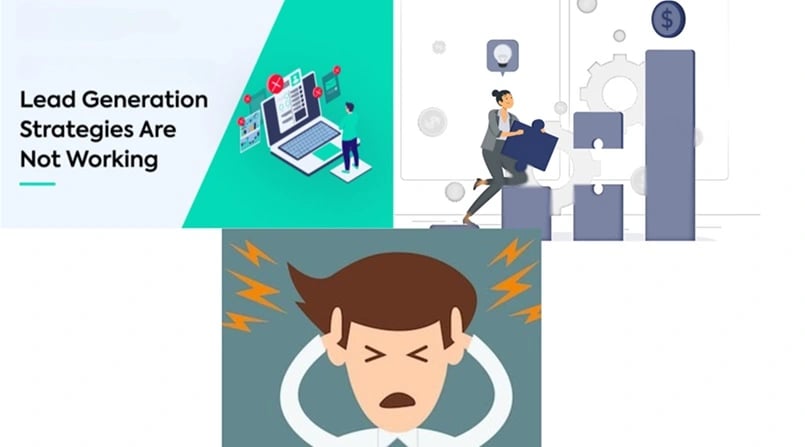
Strategies for optimizing your website’s conversion rate can significantly impact your business success. By understanding your customers’ needs and behaviors, you can transform leads into loyal clients. Implementing effective techniques will help streamline your design brand and enhance your social media presence. At Mister Nguyen Agency, we specialize in equipping you with the tools and insights necessary to elevate your conversion rates and drive sustainable growth for your business. Dive into this guide to discover proven tactics that can help you achieve remarkable results.
Understanding Conversion Rate Optimization

To enhance your website’s effectiveness, Conversion Rate Optimization (CRO) involves strategically analyzing user interactions to turn visitors into customers. By implementing proven techniques, you can improve your business outcomes.
Definition and Importance
Any online business should prioritize Conversion Rate Optimization as it directly impacts your potential to turn casual visitors into loyal customers. By optimizing conversion rates, you can effectively maximize your marketing efforts and achieve significant growth.
Key Metrics to Measure
Across different stages of your business, measuring key metrics related to customer behavior is vital for improving your conversion rates. These metrics include conversion rate, bounce rate, average session duration, and customer acquisition cost. Understanding these figures will help you identify areas for improvement.
Also, tracking metrics like lead generation can provide critical insights into how well your website captures user interest. By analyzing these figures, you can fine-tune your approach, ensuring your content aligns with your customers’ needs. As you work with experts such as Mister Nguyen Agency for exceptional social media and design brand strategies, you’ll see the effectiveness of your optimization efforts reflected in increased leads and conversions.
Identifying Target Audience

While understanding your target audience is crucial for successful conversion rate optimization, it allows you to tailor your website’s design and content to meet their specific needs. By recognizing the demographics, preferences, and pain points of your potential customers, you can create a more engaging experience that guides them toward conversion. Ultimately, this strategic alignment leads to higher engagement, more leads, and increased sales for your business.
Creating Buyer Personas
With well-defined buyer personas, you can better understand your ideal customers’ motivations and behaviors. These semi-fictional representations, based on research and data, help you visualize who you are targeting and tailor your marketing strategies accordingly. Incorporating insights from social media and customer interactions will refine your buyer personas, ensuring your website remains appealing and relevant to your audience.
Analyzing User Behavior
The analysis of user behavior provides valuable insights into how visitors interact with your website. By tracking user actions, you can identify patterns and trends that reveal what works and what doesn’t in your business’s digital presence. This understanding allows you to make informed adjustments that enhance user experience and drive conversions.
In fact, user behavior analysis can help you uncover key metrics such as bounce rates, page views, and time spent on each page. By leveraging tools like Google Analytics or heat mapping software, you can see which areas of your website attract your customers’ attention and which areas may be causing friction. This knowledge enables you to optimize your website’s layout, design brand elements, and content to better align with your audience’s expectations, leading to improved conversions and a stronger business presence online.
Enhancing Website User Experience

The user experience of your website can significantly influence your conversion rates. By focusing on simplifying navigation, improving aesthetics, and ensuring your site meets the specific needs of your customers, you can create an engaging environment that encourages interaction. Prioritizing user experience not only helps to convert leads but also fosters long-term loyalty, promoting your business’s overall success.
Design Best Practices
Practices such as maintaining a clean layout, using consistent colors and fonts, and ensuring mobile responsiveness can greatly enhance your website’s design. By aligning your design with your brand identity, you create a cohesive experience that resonates with your audience. Investing in high-quality visuals and effective calls to action can guide customers seamlessly through their journey, ultimately boosting your conversion rates.
Optimizing Site Speed
Speed plays an important role in retaining your customers’ attention. A slow website can frustrate visitors, leading to higher bounce rates and lost revenue opportunities. To optimize site speed, you can compress images, minimize server response times, and leverage browser caching. Each of these elements contributes to a faster, more efficient browsing experience, keeping users engaged and increasing the likelihood they will convert.
A well-optimized website is necessary for maintaining high conversion rates. If your site takes too long to load, potential customers may leave before even seeing your offer. Focus on implementing responsiveness across devices, as mobile users represent a significant portion of your traffic. Regularly testing your site speed through tools like Google PageSpeed Insights can help you pinpoint issues and ensure a swift experience for your customers, ultimately improving leads and conversions for your business.
Crafting Compelling Calls-to-Action

All successful websites understand the power of compelling calls-to-action (CTAs). They are your crucial tools for guiding customers toward taking desired actions that benefit your business, such as signing up for newsletters or making purchases. By strategically crafting CTAs, you can significantly enhance your conversion rates and generate more leads. It’s all about motivating your visitors to engage further with your brand.
Elements of Effective CTAs
Above all, effective CTAs possess clarity, urgency, and relevance. Your messages should be straightforward, prompting users to take action without ambiguity. Utilizing action-oriented language fosters a sense of urgency, while personalization ensures that the message resonates with your target audience. When well-crafted, these elements can drive engagement and compel your customers to act.
Placement Strategies
Behind every high-converting website is a thoughtful strategy for CTA placement. Position your CTAs where they naturally catch the eye and feel organic within the user journey. Whether at the top of the page, in the middle of content, or as part of a pop-up, your goal is to make it easy for your customers to act when they feel most engaged. Testing various placements will help you discover which areas yield the best results for your business.
Understanding placement strategies involves analyzing user behavior on your website. You want to evaluate where your customers spend the most time and what actions they take at different stages of their journey. For instance, placing CTAs at the beginning of articles can capture attention, while ending a page with a strong CTA can capitalize on interest. You should experiment with different locations in conjunction with A/B testing to optimize for maximum engagement and conversion rates for your brand, particularly on platforms like social media, where visibility is key.
A/B Testing and Experimentation
Now, A/B testing is a powerful method for optimizing your website’s conversion rates by comparing two versions of a page to see which one performs better. By conducting systematic experiments, you can gain valuable insights into what resonates with your customers, leading to improved experiences that drive more leads and sales for your business. This practice allows you to make data-driven decisions that enhance your website’s effectiveness and ultimately contribute to your overall success.
Basics of A/B Testing
Among the foundational aspects of A/B testing is the straightforward comparison between two variants of a webpage. One version, designated as “A,” typically represents the current design, while “B” introduces a new element, such as a different call-to-action or layout. By directing a segmented audience to both versions, you can track their interactions, engagement, and conversion rates, allowing you to identify which design better meets your business objectives and captures your customers’ attention.
Analyzing Test Results
Analyzing the results of your A/B test is vital for understanding which version of your website is more effective. You should focus on metrics like conversion rates, bounce rates, and user engagement levels to draw meaningful conclusions. This analysis enables you to iterate quickly and implement changes that elevate your business’s success in attracting and retaining customers.
But, simply collecting data isn’t enough. You must interpret the findings carefully to discern patterns and trends that reveal your customers’ preferences. It’s important to establish a clear framework for evaluating success, factoring in statistical significance to ensure that your results are reliable. By conducting thorough analyses, you can confidently apply your insights to future campaigns, guiding your design and content strategies, and ultimately enhancing the overall user experience on your website.
Leveraging Analytics for Continuous Improvement
Many successful businesses utilize analytics to refine their conversion rate optimization strategies. By regularly analyzing user behavior and engagement metrics, you can pinpoint which elements of your website resonate with your customers, guiding your adjustments towards higher conversion rates. For more insights on developing a conversion rate optimization strategy, research into the resources provided by Mister Nguyen Agency.
Tools and Techniques
Across various platforms, numerous tools are available to track and assess key performance indicators for your website. Utilizing A/B testing, heat maps, and customer journey analytics can provide you with deeper insights into what drives leads and enhances user experience, thereby streamlining your business’s optimization efforts.
Understanding User Feedback

Beside analytics, gathering and interpreting user feedback is crucial for improving your website’s conversion rate. Engaging with customers through surveys, reviews, and direct interactions allows you to gain insights into their preferences and challenges, offering you actionable data to enhance their experience.
This feedback is invaluable in shaping your website and overall business approach. By actively listening to your customers, you gain a clearer perspective on their needs, which can direct your design and functionality improvements. Furthermore, utilizing tools for sentiment analysis can help you identify common pain points, enabling you to address issues proactively and foster stronger relationships with your leads through social media and tailored branding strategies.
Conclusion
Ultimately, focusing on Conversion Rate Optimization (CRO) will empower you to enhance your website’s performance, effectively turning visitors into customers. By implementing targeted strategies, you can maximize your leads and grow your business sustainably. Consider partnering with experts like Mister Nguyen Agency to elevate your social media presence and design your brand for maximum impact. Engaging effectively with your audience will not only improve conversion rates but also foster lasting relationships with your customers.











